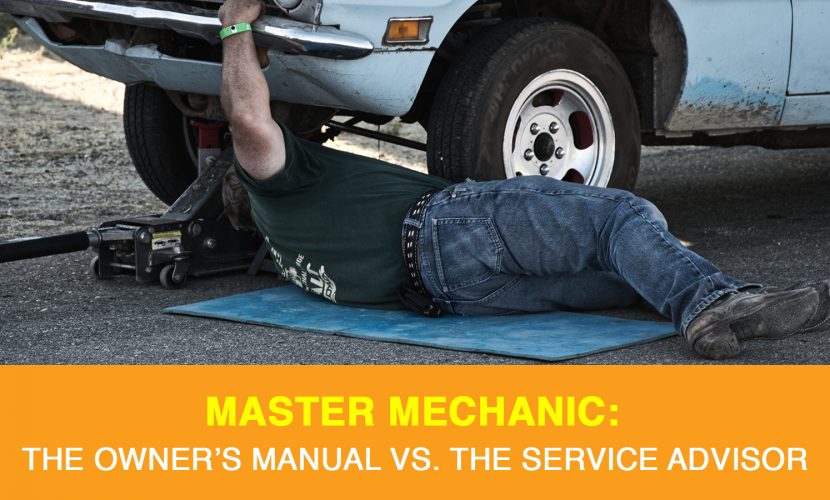
Master Mechanic: The owner’s manual vs. the service advisor
We’re sticklers for honesty and transparency at Master Mechanic. So when one of our customers asked us to settle this common conundrum, we decided to write about it. It’s a familiar head-scratcher: your auto retailer emails you a service reminder months before the your owner’s manual recommends maintenance. What’s with that discrepancy? And why do the oil-change clings stuck to the inside of your windshield suggest you come back in three months or 5,000 km, as opposed to the six months/12,000 km suggested in the manual?
Well, the answer is a bit complicated. In recent years, automakers have invested significantly in technology to make their vehicles less expensive to own and maintain. Today, cars are built to go longer between routine services; intervals of 10,000 to 12,000 km between oil changes aren’t uncommon. That doesn’t stop the service department at your dealership from encouraging more frequent services and suggesting ones that aren’t explicitly recommended in the manual.
What’s driving this? The short answer: profit. Nearly every car dealership operates multiple revenue streams—these include revenue from vehicle retail, finance and insurance, parts and accessories, and the service department. Paying the overhead of the dealerships’ operating costs is a shared obligation. In those vast dealership lots, that overhead can be significant. As automakers continue to stretch maintenance intervals, dealerships are constantly looking for ways to replace that lost income. And this means resorting to recommending shorter intervals and upselling special packages ranging from fluid flushes to preventative maintenance.
Do Newer Cars Need Less Maintenance?
Of course, nowadays automakers will insist that their products are better engineered making frequent oil changes and transmission flushes unnecessary for preserving the life of the vehicle. But service advisers often argue that car manufacturers’ interest in protecting their products elapses the moment the warranty does (or thereabouts). So if you want to make sure your car reaches the average 9-year lifespan most Canadian vehicles can expect to see, those frequent visits and additional services can go a long way.
So, who’s right here, anyway? The answer is, both have a point. And while that doesn’t sound immediately helpful, we have included a few tips to make navigating your service intervals a little easier.
Navigating Service Intervals
First, open up your owner’s manual. If you see both regular and severe maintenance schedules, go by the severe one. “Regular” denotes California, and this is Canada, where four seasons of weather take their toll on cars and roads alike.
Make sure to pay attention to the fine print about automated oil reminders. Most automakers list a maximum distance your car can travel between oil changes, whether the reminder light has come on or not. Ignore this warranty at your peril: it could end up voiding the warranty of your engine.
If you’re in the habit of keeping track of your car’s fluids, tire pressure, brakes and undercarriage and keep track of anything loose, broken or worn, you might be able to get away with two visits to a shop per year, depending on your mileage. But if you’re less enthusiastic about monitoring your car’s maintenance—like most Canadians—it’s smart to have an expert check it out 3-4 times a year. It’s probably all the assurance you need that your car’s in good repair.
If your service adviser suggests a fluid flush, do ask about its benefits and why the manufacturer doesn’t require it. Some chemical companies will offer warranties on your car’s components involved in the flush treatments, which makes for affordable protection if your car’s factory coverage has elapsed.
While most Canadians have their cars serviced on warranty, it’s often more cost-effective and convenient to bring yours to Master Mechanic for routine maintenance once the warranty has expired. And rest assured that we’ll never recommend services your car doesn’t need. If anything on (or in) your car needs replacing, we’ll always show you the worn part to explain what’s needed, and why. As always, if you’d like an expert opinion on whether your car needs servicing, don’t hesitate to give your local Master Mechanic a call.

